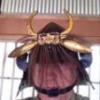-
Posts
14,090 -
Joined
-
Last visited
-
Days Won
261

Bugyotsuji replied to Bugyotsuji's topic in General Nihonto Related Discussion

Bugyotsuji replied to Bugyotsuji's topic in General Nihonto Related Discussion

Bugyotsuji replied to Bugyotsuji's topic in General Nihonto Related Discussion

Bugyotsuji replied to Baka Gaijin's topic in General Nihonto Related Discussion

Bugyotsuji replied to Bugyotsuji's topic in General Nihonto Related Discussion

Bugyotsuji replied to Bugyotsuji's topic in General Nihonto Related Discussion

Bugyotsuji replied to Stephen V's topic in General Nihonto Related Discussion

Bugyotsuji replied to Bugyotsuji's topic in General Nihonto Related Discussion

Bugyotsuji replied to Bugyotsuji's topic in General Nihonto Related Discussion

Bugyotsuji replied to Bugyotsuji's topic in General Nihonto Related Discussion

Bugyotsuji replied to Bugyotsuji's topic in General Nihonto Related Discussion

